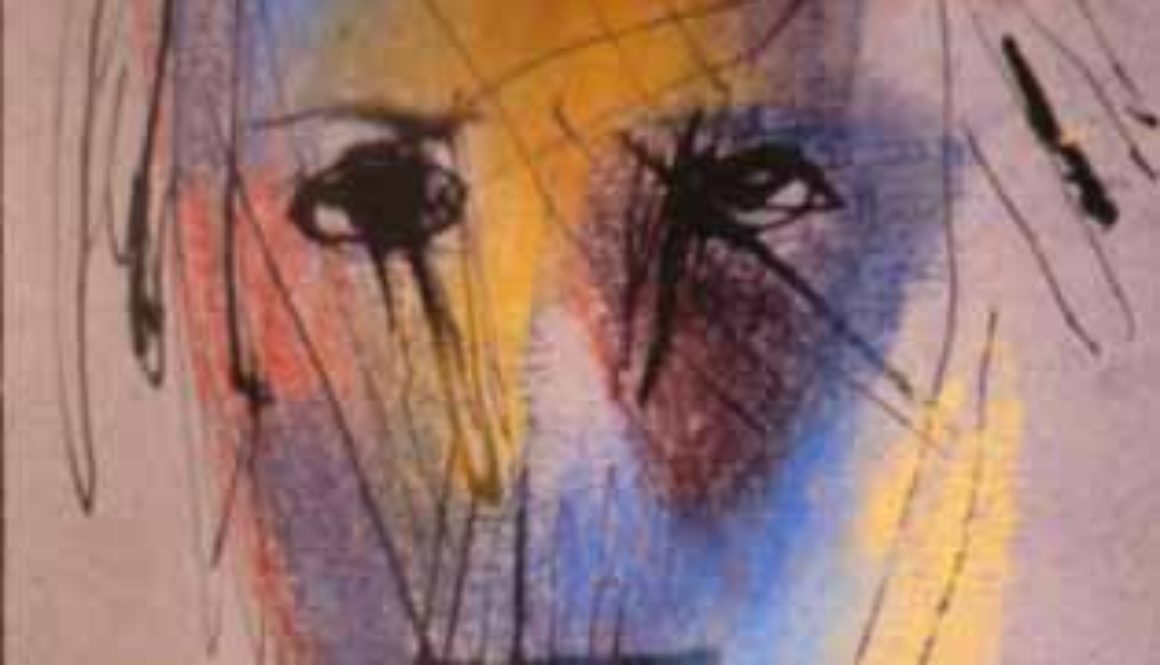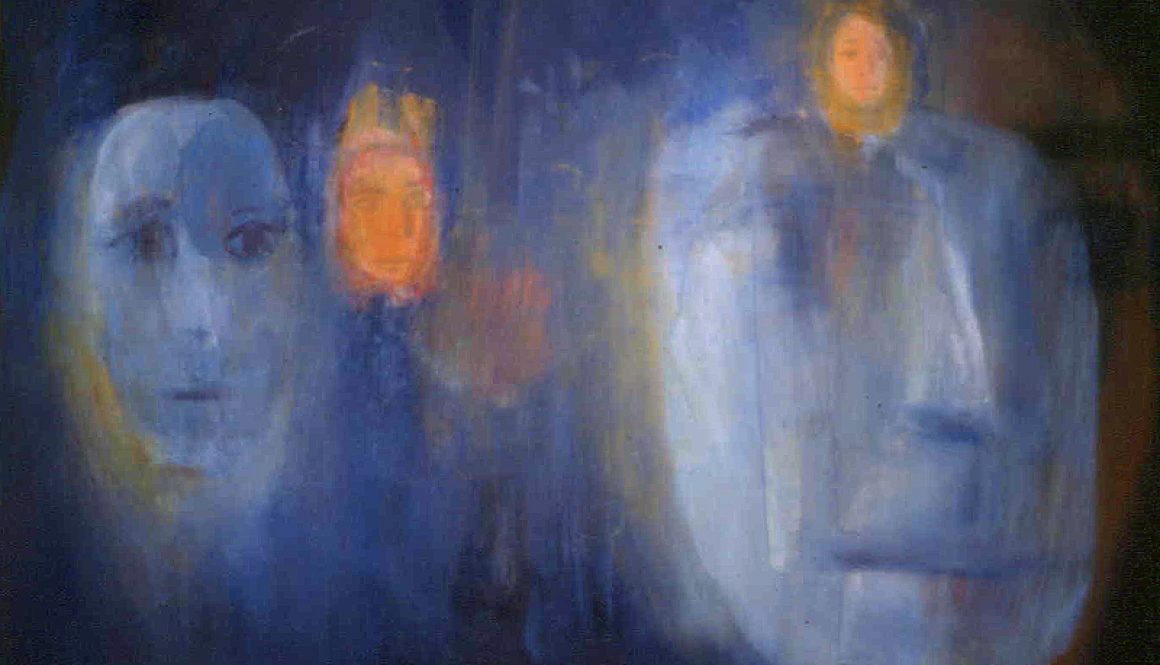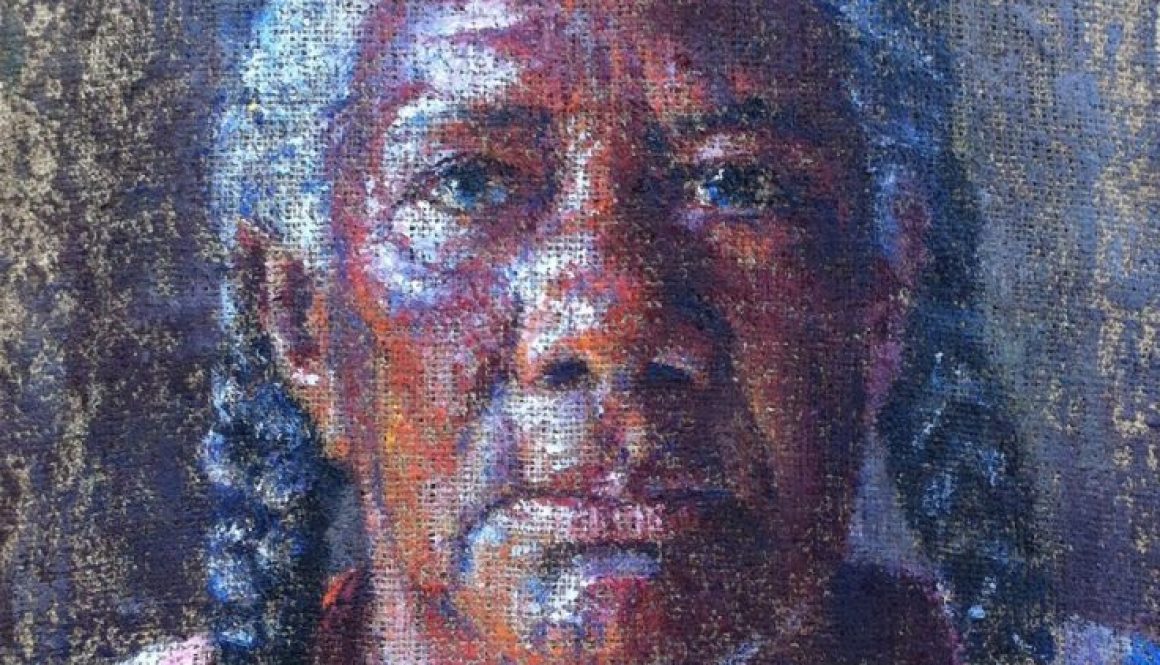Venezuelan Knife Paintings 2003-2007
Venezuelan Knife Paintings 2003-2007
A brief description of this gallery is coming soon.


All my work essentially began with this simple act: looking in the mirror and drawing a self portrait. This was the most truthful, honest and fundamental form of picture mak– ing and it came naturally without any particular thought.
It was many things to me. Mostly this was my own form of self awareness. I was con– fused about my real identity as my mind and feelings were changing constantly – I felt I had no point of reference. Whenever I was experiencing something strongly, I would study my face in the mirror and record it as a true reflection of what I was on the inside. I did this over a thousand times during these years.
I became aware of several phenomena: Firstly, I observed that my face changes continuously, bringing out different aspects of my personality and secondly, the hand never lies– it expresses exactly what is going on inside. Drawing even the simplest of faces pro– jects on paper the inner landscape. I began to see the forms of the face as the most fun– damental and abstract elements conveying in an almost scientific manner the total psy– che. Thirdly, I noticed a lateralization of emotions and experiences on each side of the face. Certain thoughts and emotions activated(or stimulated) one side of the face or the other.

My early life was a series of compulsive obsessions of one thing or another. After Tolkien, it was television. For many years, I was glued to the screen for up to 10 hours a day. I eventually wanted to free myself from its hold as I began to get more serious about my art. The first self–portrait(left) was a visual pun on my habit and identification with TV. When I finally decided that enough was enough, I painted the piece below, commemorating an end to my years of watching TV.

After TV, sex became the next key point of focus for my work. I felt at that time that sex and art were at distinct opposite poles and I was deter– mined that art stay on top. I had never masturbated or had sex with women and I was deter– mined to keep it that way. I felt that art was something I had to sacrifice for and sex was my main offering.
As I began my first year of college and came in close contact with women, however, losing my virginity became a pressing subject. Morally, I knew it was best to wait until I got married, but I began to feel pressure and my opportunities(as I was now somewhat popular) were getting too much for me. I began to think of a way that would preserve some integrity in my work while respecting the natural course of future events.. I arrived at the solution during the first break in school in the summer of 1979.
I would construct a lifesize nude woman in clay, giving her all the qualities I desired to lose my virginity with. Then, while the clay was wet, I would make love to her. All the marks of my hands and body on the female figure from that night would be visible to be cast in bronze. This would be both the “object of” and “monument to” the loss of vir– ginity. Sex would become art!
Although, I still considered myself a painter, I felt this idea was revolutionary and would be important. I was so excited – I immediately changed majors that fall from painting to sculpture in order to have the time and access to the materials.
This idea so excited me! I immediately constructed an armature to hold 500 lbs. of clay and set to work. I used no particular model for the piece and so the figure became a sort–of female self–portrait. She was designed to receive me and my sexuality but her posture also expressed a yearning and a resignation, I worked on her month after month, slowly bonding with the piece. Then several months into the work, I met a real women and fell in love. But I was still absolutely dedicated to having my piece be my first sexual experience. I dated M for many months but kept her waiting for the piece to be finished. She was also an artist and so, was understanding and patient. I began to use her as a model. When I saw her body, I was overwhelmed and felt that the sculpture could never compete. But I worked and worked and felt myself close to finishing on several occasions– but for some mysterious reason the piece would crack or fall apart soon after.
This was a time when my dialogue with the Almighty was becoming stronger. I read these things as signs but still pushed on. The piece was looking more and more like M. Finally, one day late in the school year– as with Pygmalion, I felt I was in love with the piece. I wrapped her up carefully with the wet rags to keep her moist and went home. The next day I saw another huge crack in the abdomen. The weight of the clay was too much and was slowly pulling down the lower part of the body. I said to myself, “Today has to be the day..” This was April 2nd 1979, some seven months after beginning the project. That evening I brought my special cassette recorded for the event. I recorded Sinatra’s ”I’ve Got You Under My Skin,” ten times in a row. I wanted that experience to go with that song.
I came in the studio that night.- the sculpture building was empty. I felt apprehensive. Was I ready? I turned off the lights and rubbed my hands over her. I put on the cassette and took off my clothes.I’ve got you under my skin, I’ve got you deep in the heart of me. So deep in my heart, that you’re really a part of me.. I’ve got you under my skin. I approached the sculpture– what was I thinking? I’ve tried so– not to give in. I’ve said to my self this affair never will go so well. I was struggling to get “ready” but was having some difficulties. The clay was wet and cold. So why should try to resist, when, baby, I know so well, I’ve got you under my skin. I began to think for the first time, was this right? In the seven months working on the piece, the moral implications never really occurred to me– but now facing the act, they became palpable. I’d sacrifice anything come what might for the sake of having you near, in spite of a warning voice that comes in the night and repeats, repeats i my ear . Didn’t I have real warm woman who I wanted and was waiting for me? Don’t you know, little fool, you never can win. Use your mentality, wake up to reality. Did I really feel anything for this clay woman? I pushed the piece away slowly tottering on its armature, then let it sway back to me. Was this right? Can I really do this? I pushed it back a little farther and the main rod broke and the piece fell to the ground. I was dumfounded. I took the cassette player with me and left the studio still playing the song. Don’t you know, little fool, you never can win. I wandered around campus, then decided that the sculpture should not die in vain. Use your mentality, wake up to reality. I called up M and told her that the relationship was over. I felt at least I accomplished something that night. But each time that I do, just the thought of you makes me stop, before I begin, I walked and walked late into the night and then found myself going in the direction of her apart ment. I went inside and completed the sculpture with her.
‘Cause I’ve got you under my skin.


A completely new means of expression started with a portrait commission of a mother and child from the manager of my studio building. I had to work from photos, so I ended up with a Raphaelesque madonna and child composition. I worked it up well and ended up with a decent likeness and rendering. But something wasn’t satisfied. I destroyed it a day later and began working it over again. time passed and I wasn’t getting anywhere. I began to regret destroying it the first time. At this point, I must have worked over it thirty times. I got so frustrated I picked up an oil pastel and began drawing straight par- allel lines over it in a sort of obsessive compulsive way. Making these marks touched a nerve inside, they felt right. this obsessive mark making expressed my personality in a more real and abstract way. I began to use the lines in a spatial way, going in and out of the subject. they became perspectival marks. I reworked the portrait with this new approach and ended up with a much more satisfying result and a new method of work- ing. that’s how a painting should end up- in a new world.

An artist’s life is also a long process of distillation of all of one’s energy and thought into a pure and direct expression. One wants the artistic process to be exciting and involve every aspect of the mind. At this point in my development, I combined my interests in the face and right and left handed paint- ing in a series of planetary heads. I call them so as the head was to me the center of man’s universe, it has its own gravity and can exist in a picture autonomously. Painting the head was a complete expres- sion for me and needed no other elements. I designed these pictures, as in my first narrative works, to contain a psychological event in the act of painting it, in this case, the drama of the right and left brain hemispheres. the heads painted by the right hand(and therefore, the left hemisphere) repre- sented one half of this drama, while the left hand, the other. I had no preconceptions of the expres- sions of each hand although in some cases, the heads were painted first then cut out and selected according to their expression.

It was a natural to try mosaic at this point. My forms were squaring off and I wanted to push the tension between surface and depth even farther. Nothing gives a more impenetrable appearance than stone and I wanted to open this up and allow the eye to enter inside. I first used my own face and tried to render flesh and personality in the facets of marble. I was shortly thereafter given my first mosaic commission. This was to be a pictorial mosaic to be hung on the wall. I was determined to make it work like no other mosaic I‘d seen and want– ed it to have the depth of a painting. I was given free reign and I used a 3D photo my wife took of me in the Orinoco. I thought the water and the light would translate well in polished marble. I bought plenty of lapiz lazuli and onyx and went to work. The traditional mosaic technique is to draw out the composition first and then cut the stone. Since my approach was painterly, I worked exactly as I did on a painting. I looked and felt the subject and then tried to push the materials in response. I cut and recut and rearranged the stone hundreds of times as the spaces between the tesserae were as important as the image they created. I wanted the grout lines to create the design and sense of space. I worked and reworked the color to convey the light of late afternoon. When it was finished, the hundreds of polished facets reflected the light like a gem, emphasizing the picture plane and depth of the image. I was very pleased with the results and returned to my painting with new ideas.

This scene I painted many times– it was just outside my door. I considered it a kind of self–portrait as it was what I saw through my eyes day in and day out. We were living in a small storefront at the time on Crosby Street in Soho. I hated this view– every morning: the oppressive buildings, the false colors, the trucks, the noise– the act of painting helped me live with this– it “poeticized” it for me. Working from landscape records the fundamental experience of connecting inner and outer nature.
I was always drawn naturally to paint “tunnel” landscapes as I liked pushing and carving the scene into the canvas. The modern urban view looking down a street with buildings on either side with the center projecting into the distance was a good basic “digging” motif to work with. I considered these pictures inside out portraits. They are large convex forms that fits over the face comfortably. They are almost all painted headsize so they are like slipping on the mask of the artist and looking through his eyes.
Living and painting in New York showed itself in my technique. The pictures became as “gritty” as the city streets through repeated layering of heavy paint. The light reflecting off this surface texture reinforced the picture plane while the scene floated deeply within.
